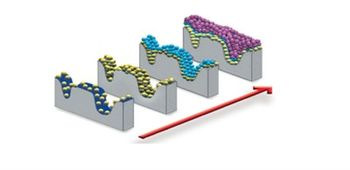
In the pharmaceutical world, particle size analysis has traditionally been the method of choice to “characterize” raw materials. Beginning with sieve analyses all the way to more current technologies like laser light scattering, this physical characterization measurement has been used to set incoming raw material specifications, help determine which excipients will be used in a formulation, and troubleshoot product performance issues such as dissolution. While particle size analysis is, without a doubt, an important piece of the puzzle, it is exactly that – a piece. Other measurements can provide essential and useful information as well and, when paired with other techniques, assist the pharmaceutical scientist to more fully characterize their Active Pharmaceutical Ingredients (API) and excipient materials. Among these techniques is the measurement of surface area.
More comprehensive material characterization can aid the scientist in developing meaningful specifications for a particular material with respect to how it will behave in your process and product. A supplier’s specification may be adequate in some cases, but in other instances a material manufactured at one end of the supplier’s specification may behave completely differently than a subsequent lot that is produced at the other end. While both lots may meet the supplier’s specification and be deemed acceptable, receiving the material from both ends of this “specification spectrum” may cause unwanted process or performance shifts in your operation. As a quality control tool, surface area measurement can be added to the battery of incoming raw materials tests to ensure the materials you are using are consistent in terms of the attributes you have identified as critical to your process and product performance.
The surface area of a material can change as a result of particle size reduction. This could be the result of having different grades of the same material or from material processing steps. As a material is mechanically sieved or milled, the material will break apart into smaller discrete particles. Since particle size and surface area are inversely proportional, any reduction in particle size corresponds to an increase in surface area. This increase may lead to uniformity issues where the increased surface area, and resultant increase in surface energy, alters the particle-particle interactions and may destabilize the blend causing ineffective or inefficient blending, demixing, or segregation – major causes of blend and content uniformity failures.
From the onset of pharmaceutical development, material characterization is essential in order to understand the system being developed. It is critical to understand how key functional ingredients and their properties can affect the product during the manufacturing process as well as whether the dosage form will perform as expected once administered. Surface area, along with other factors such as salt selection, of the API can play a role in solubility. Surface area of a superdisintegrant may determine the degree of tablet swelling that occurs. Surface area of a lubricant could alter its functionality and lead to dissolution issues or softer than expected tablets. Arming yourself with this information from the beginning of the development process may save potential downstream headaches due to potential process re-designs, re-work of poor performing product, or product rejection. The surface area of particular ingredients in a formulation may be considered a Critical Quality Attribute (CQA) that, when performing Risk Assessment (under the guidance of ICH Q9), will place added importance on this parameter and may become part of your overall control strategy.
Another area of concern when it comes to variability of material surface area measurements is the rate an API goes into solution. As surface area increases, more surfaces are exposed to whatever the dissolution medium is. All else being equal, the material with higher surface area will go into solution more quickly and be available for absorption at a rate that could have negative pharmacodynamic implications. This could also lead to product rejections or recalls due to safety concerns.
To determine the surface area, solid samples are pretreated by applying some combination of heat, vacuum, and/or flowing gas to remove adsorbed contaminants acquired (typically water and carbon- dioxide) from atmospheric exposure. The solid is then cooled, under vacuum, usually to cryogenic temperature (77 K, -195°C). An adsorptive (typically nitrogen or krypton) is dosed to the solid in controlled increments. After each dose of adsorptive, the pressure is allowed to equilibrate and the quantity adsorbed is calculated. The quantity adsorbed at each pressure (and temperature) defines an adsorption isotherm, from which the quantity of gas required to form a monolayer over the external surface of the solid is determined. With the area covered by these adsorbed gas molecules known, the surface area can be calculated. This method complies with the current USP <846> methodology for measuring specific surface area.
When problems occur such as a failing blend or content uniformity, failing disintegration times, or unexpected shifts in dissolution profiles, evaluation of both materials and processes must be undertaken to determine a root cause. Analysis of material surface area can play an important role providing you with extremely useful information as early in the development process as possible. This is important in a Quality by Design (QbD) environment where experimental design may be used to create a design space that will allow the manufacturer to be agile and flexible in creating robust processes and products that lend themselves to the ever-elusive decrease in regulatory oversight while maintaining confidence that critical parameters have been adequately identified and controlled.
